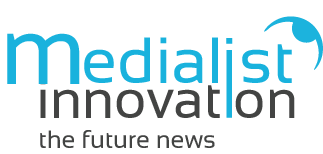Processes, innovations and technologies are developing at an unprecedented pace. The digital transformation is sweeping through all corporate departments and has an impact on processes in marketing, sales and product development. The latter in particular are increasingly confronted with the challenges of the digital future, because automation, disruption and new technologies are shaping product development in the corporate world of tomorrow.
But which technologies play a central role in digital product development and what is best for your employees? To get a better understanding of the needs and problems on the employee side, it is important to observe him in his everyday work and learn how he currently uses the processes or the current tools and where there is potential for improvement. You have to gather the information directly from him and accompany him in the most mundane processes in order to identify patterns in behavior and enrich them with new opportunities.
Even if this kind of observation sounds strongly like a part of the classic Design Thinking approach, it is inevitable in all processes and methods. In the working world of tomorrow, new skills, process chains and technologies count. But not all solutions on the market are suitable for all groups in your company. So keep a close eye on where things are currently going wrong in your company, let your employees explore new technologies and slowly introduce them to the digital future of product development.
The transformation in product development
Product development, just like other industries and departments, will have to find its place in the digital future. It needs to constantly reinvent and evolve. In the search for the appropriate trends, the traces of change, it is essential to understand that in the future, everything that can be automated, virtualized or digitalized will ultimately be subject to this change. As a consequence, this will have an impact on all work processes and steps that are currently used in product development. Thinking outside the box is the key tool. Departments need to understand what trends will affect the future of the products they manufacture and what impact this will have on their own work.
But it’s not as complicated as it sounds at first. With simple methods and a little courage to try new things, companies can continue to develop innovative and market-dominating products. There is no room here for the so widespread fear of the future. As an Innovation Profiler and Future Strategist, it is important to me that companies understand that while the future is full of uncertainty, this does not have to be a negative thing. Rather, such a challenge is a source of many new ideas and opportunities. Therefore, see change as an opportunity for a fresh start that will not only increase sales and efficiency in processes, but also help your product developers to do their jobs even better.
3 Technologies for Digital Product Development
We are in the midst of a revolution. Not only is the mobile Internet changing everything, the entire process structure is transforming in the wake of the fourth industrial revolution. Yet a lot has happened since the introduction of mechanical production equipment in the 18th century. In today’s industry, processes are networked. This is a development that has left its mark on product development in particular.
Today, digital product development belongs in every contemporary production hall. The processes of the future work with new technologies that bring intelligence to the high-speed machining process. Once to improve process reliability, but also to optimize machining performance and enable a reliable development process.
Augmented Reality
HoloLens 2 – a revoltuion in product development (Source: Microsoft)
Augmented reality enables a new form of communication between the real world with the virtual world. Through the cameras in computers, smartphones or special displays, such as the HoloLens or Google Glass, the real image is overlaid with digital objects in real time.
But while smartphones and tablets are more something for end customers, there are the Smart Glasses and the HoloLens, which are currently causing a revolution, especially in product development. Classic work on the screen is being replaced by work that can be applied directly to the prototype. Never before has it been possible to reproduce possible product designs or elements so quickly. In logistics, too, smart glasses make it possible to find the right products on the shelf more quickly. At DHL, for example, which has equipped its logistics with these smart glasses, this has led to an immense increase in internal productivity in the warehouses.
Virtual Reality
https://www.youtube.com/watch?v=6z3-Hm9Trak
Virtual Reality Prototyping at Seat (Source: Seat)
Dreaming with your eyes open. That’s virtual reality. VR fulfills a dream that people have had for a long time. Without effort, you can – even if only virtually – anywhere you want. Whether to a foreign country or a fantasy world. The technology will be a $22.4 billion market by next year, according to recent studies.
More and more companies have discovered the potential of technology. What used to be a gimmick at many events now often already represents real added value. Companies like Seat, for example, are already using the possibilities offered by technology to better develop their products and gain a holistic impression.
3D Printing
What is 3D Printing? (Source: Mashable)
It is now hard to imagine product development without 3D printing. The new technology opens up new potential for companies in terms of efficiency, speed and individuality. It is part of the so-called additive manufacturing, the production of three-dimensional objects from digital data. One might almost say that this innovative type of product development is companies’ answer to the data age.
Whether in the factory or in the department, the technology makes it possible to produce complex parts more cheaply and faster than is possible with a classic production process. Customers in particular are gratefully embracing this technology because it allows them to actively participate in product development themselves. Imagine products created together with the customer? An endless variety of possibilities that don’t even have to be expensive thanks to 3D printing.
With all technologies, it’s important to understand the difference between trendy and trendy. Just because a technology works for a competitor or because a trade magazine writes about it doesn’t automatically make it right for your own business. Try out technologies on a small scale and dare to fail sometimes. All the technologies I have presented here will inevitably come your way within the next few years. Therefore, go into the future prepared instead of being caught cold.

